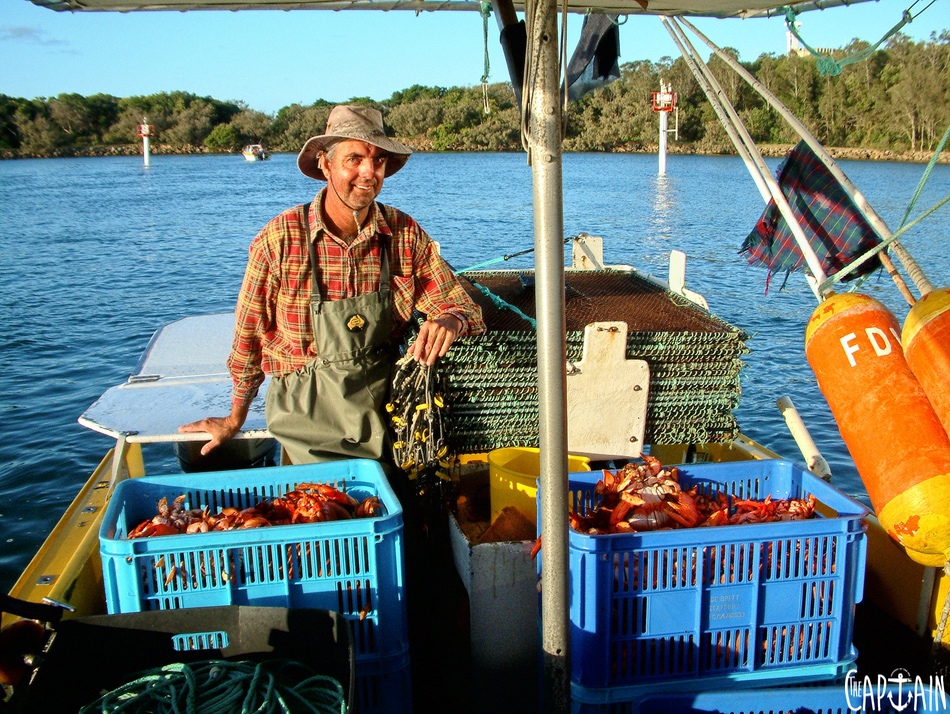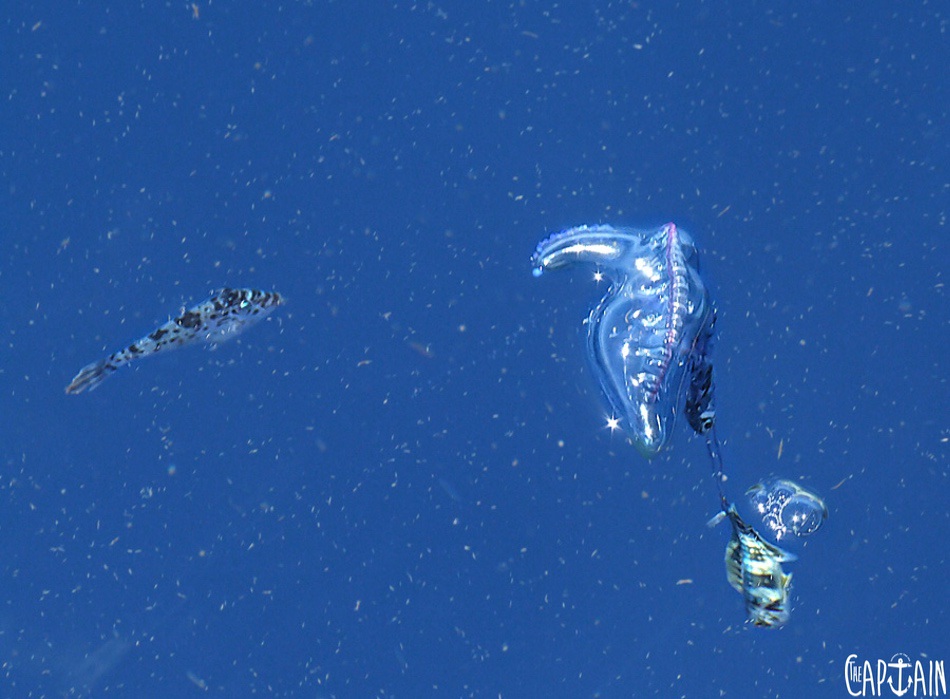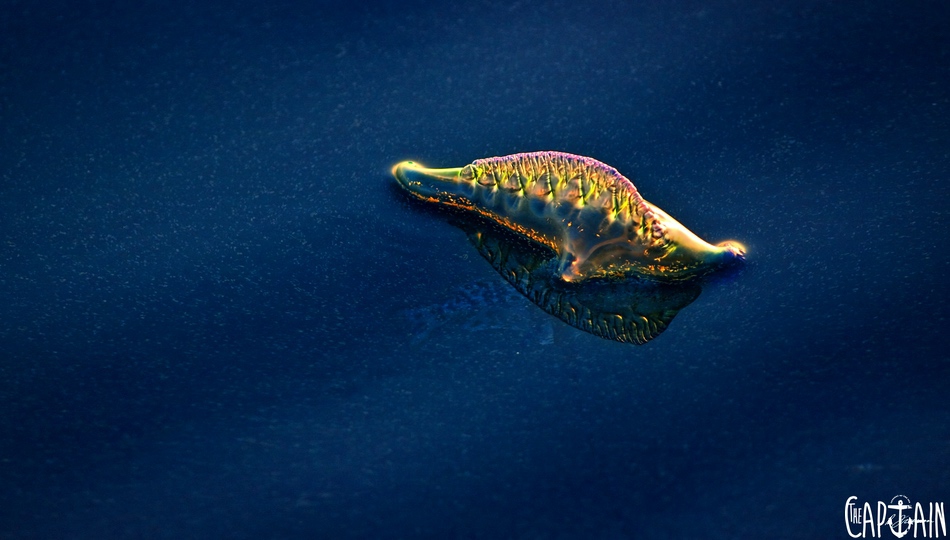Richard Freeman has been a professional solo fisherman for more than 40 years. Spending so much time on the water in his trusty Shark Cat, his usual companions are dolphins, sharks and seabirds. Richard shares a few stories about his salty friends.
The Portuguese Man o’ War was my nemesis for many years. Their stinging tentacles are as fine as cotton, can reach at 50m in length and be near-impossible to evade. On contact with skin, the pain is instant and often excruciating. On many occasions, the pain has travelled up my arm into my heart area, making me feel quite ill. One particular day, there were what seemed like millions of them in the water. I was wearing rubber gloves, which led me to attempt a little mind over matter to get on with the job at, er, hand. But by the end of the day, the pain was intense and when I finally prised off the gloves I discovered I had raw flesh between my fingers — the poison had permeated the rubber to eat my skin away.
BLUE BOTTLE BUFFET
Another day, I was quietly sitting eating a sandwich when a Portuguese Man o’ War floated past. I was astonished to see it had caught two small fish with its tentacles and was slowing reeling the wrigglers into its “balloon”, to be consumed at leisure. I managed to photograph the spectacle and I’ve been fascinated by these creatures ever since. I’d noticed they reflect surrounding colours, including boats and I wanted to capture the sunset through the balloon. Then one day, I spotted a large specimen with a gleaming sail in full canopy. Attempting this sort of macro photography at 300mm from a moving platform in the fading light, was no mean feat, but I got lucky — the colours of the setting sun on the clouds and the ocean lit him up like a beautiful glass ornament. I see real beauty in these little warships floating on the ocean. Not that this actually makes their sting any less painful.
SAIL AWAY
A Portuguese Man o’ War can raise and lower its sails. They prefer to lower their sails on very hot, calm days when I guess they’d suffer from dehydration. They are born as “port” or “starboard” tack sailors. On this baby (bottom right) you can see the following small wash as it manages to harness the smallest zephyr of breeze to sail across the current, pushing aside plankton-sized specks of marine algae bloom.
I call this one a “left-hander” because it is sailing on a port tack in a northerly wind. I imagine it would’ve sailed seawards to reproduce another generation of sailors. A right-hand sailor on a starboard tack would’ve washed ashore and died. Nature is a bit of a lottery, I reckon.






Recent Comments